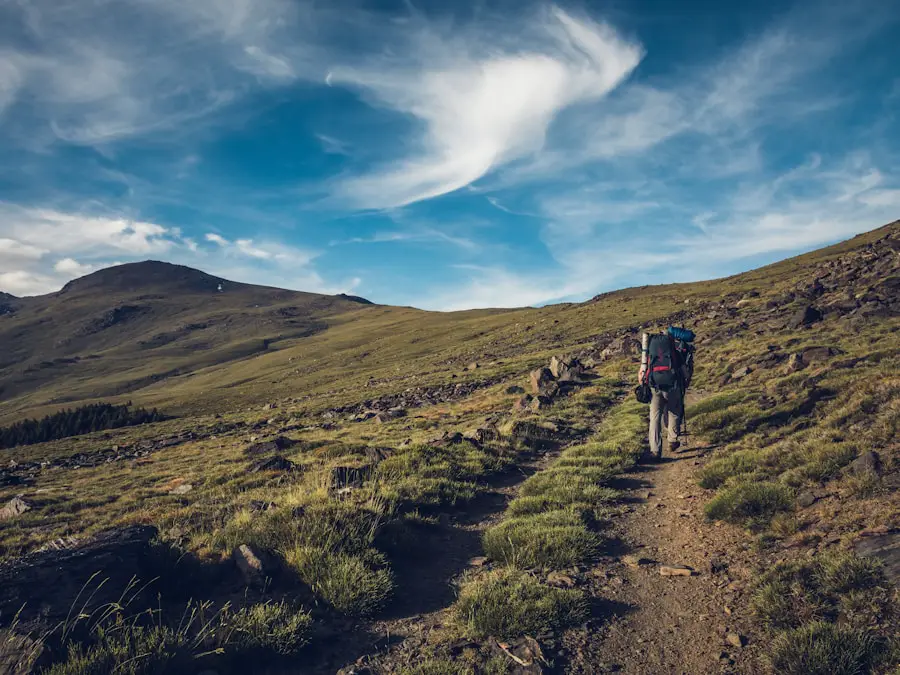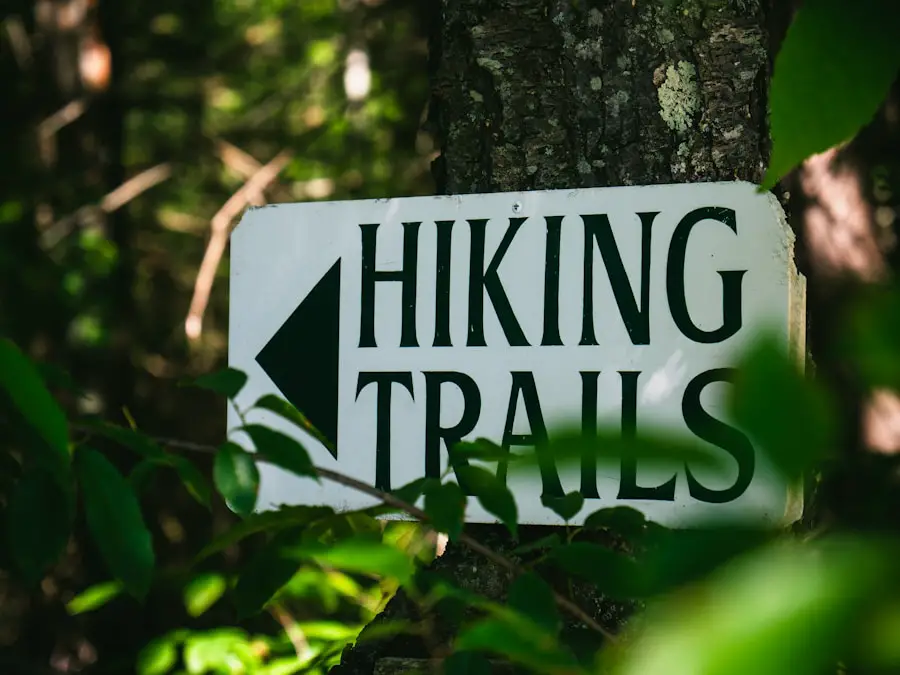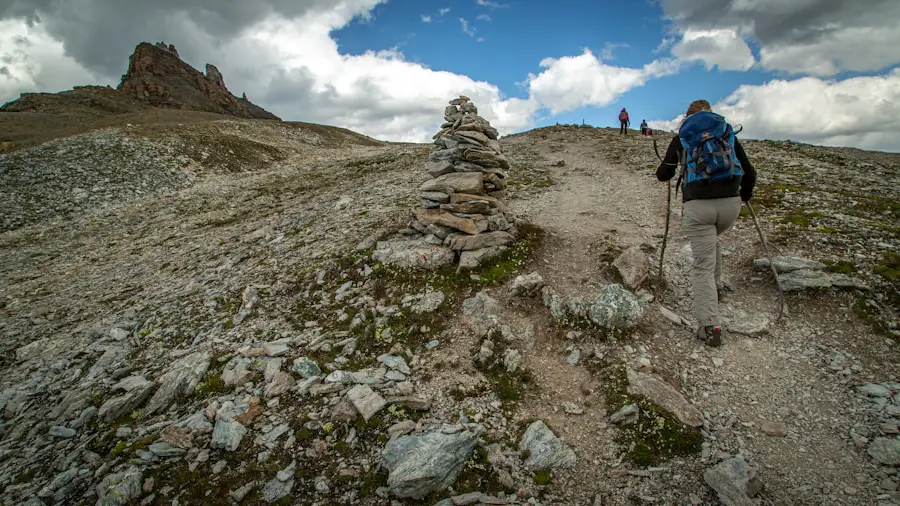Walking and hiking are two of the most accessible forms of physical activity, offering a plethora of benefits that extend beyond mere physical fitness. Engaging in these activities can significantly enhance cardiovascular health, improve muscle strength, and boost overall endurance. Regular walking or hiking can lead to lower blood pressure, improved cholesterol levels, and a reduced risk of chronic diseases such as diabetes and heart disease.
The rhythmic nature of walking, combined with the varied intensity of hiking, allows individuals to tailor their exercise to their personal fitness levels, making it an ideal choice for people of all ages and abilities. Moreover, the benefits of walking and hiking are not limited to physical health; they also encompass mental well-being. Studies have shown that spending time in nature can reduce symptoms of anxiety and depression.
The simple act of walking outdoors can stimulate the production of endorphins, the body’s natural mood lifters.
Hiking, in particular, often involves navigating through serene landscapes, which can foster a sense of peace and tranquility. This connection with nature not only enhances mood but also promotes mindfulness, allowing individuals to escape the hustle and bustle of daily life and immerse themselves in the present moment.Key Takeaways
- Walking and hiking provide numerous physical health benefits, including improved cardiovascular health, weight management, and increased muscle strength and endurance.
- Different terrains and difficulty levels offer unique challenges and experiences, from leisurely strolls on flat paths to strenuous climbs on rugged terrain.
- Proper gear and equipment, such as sturdy footwear, moisture-wicking clothing, and navigation tools, are essential for a safe and enjoyable walking or hiking experience.
- Safety considerations, such as staying hydrated, being aware of wildlife, and knowing basic first aid, are crucial for preventing accidents and injuries while walking and hiking.
- Walking and hiking can have positive effects on mental and emotional well-being, including reduced stress, improved mood, and increased mindfulness in nature.
Differences in Terrain and Difficulty
Variations in Walking Environments
Even within walking, variations exist; for instance, a stroll through a city park may differ significantly from a walk along a beach or through a botanical garden.
The Challenges of Hiking
In contrast, hiking often involves more rugged terrain that can include steep inclines, rocky paths, and natural obstacles such as roots or streams. The difficulty of a hiking trail can vary widely based on its elevation gain, length, and surface conditions.
Choosing the Right Trail
For example, a beginner-friendly trail may offer gentle slopes and well-maintained paths, while an advanced trail could require scrambling over boulders or navigating narrow ledges. Understanding these differences is essential for individuals to choose trails that match their skill levels and physical capabilities, ensuring a safe and enjoyable experience.
Gear and Equipment for Walking and Hiking

The right gear can significantly enhance the experience of walking and hiking, providing comfort and safety throughout the journey. For walking, comfortable footwear is paramount; well-fitted shoes designed for walking can prevent blisters and provide adequate support. Breathable clothing that wicks moisture away from the skin is also beneficial, especially during warmer months.
Accessories such as hats or sunglasses can protect against sun exposure, while lightweight backpacks can carry essentials like water bottles or snacks. When it comes to hiking, the equipment needs become more specialized due to the varied terrain and potential weather conditions. Sturdy hiking boots with good ankle support are essential for navigating uneven surfaces and preventing injuries.
Additionally, hikers should consider using trekking poles to provide stability on steep or slippery trails. Layering clothing is crucial for adapting to changing weather conditions; moisture-wicking base layers, insulating mid-layers, and waterproof outer layers can help maintain comfort throughout the hike. A well-stocked backpack should include items such as a first-aid kit, navigation tools (like maps or GPS devices), extra food, and hydration systems to ensure preparedness for any situation.
Safety Considerations for Walking and Hiking
| Category | Statistics |
|---|---|
| Accidents | Over 200,000 hiking-related injuries reported annually in the US |
| Wildlife encounters | Approximately 1,000 bear attacks reported worldwide each year |
| Weather-related incidents | Over 2,000 lightning-related injuries reported annually in the US |
| Search and rescue operations | Over 4,000 search and rescue missions conducted in US national parks each year |
Safety is a paramount concern when engaging in walking or hiking activities. For walkers, being aware of one’s surroundings is crucial, especially in urban settings where traffic can pose risks. Wearing visible clothing and using designated pedestrian paths can help mitigate dangers associated with roadways.
Additionally, walkers should stay hydrated and be mindful of their physical limits to avoid overexertion. Hiking safety encompasses a broader range of considerations due to the unpredictability of natural environments. Before embarking on a hike, it is essential to research the trail conditions and weather forecasts.
Carrying a map or GPS device can prevent hikers from getting lost in unfamiliar territory. It is also advisable to inform someone about your hiking plans, including your expected return time. In case of emergencies, having a fully stocked first-aid kit is vital.
Hikers should also be aware of wildlife encounters; understanding how to react to animals such as bears or snakes can be crucial for personal safety.
Mental and Emotional Benefits of Walking and Hiking
The mental and emotional benefits of walking and hiking are profound and multifaceted. Engaging in these activities allows individuals to disconnect from technology and daily stressors while reconnecting with nature. This immersion in natural surroundings has been shown to lower cortisol levels—often referred to as the stress hormone—leading to improved mental clarity and emotional stability.
The repetitive motion of walking or the rhythmic pace of hiking can also serve as a form of moving meditation, promoting mindfulness and reducing anxiety. Furthermore, walking and hiking can foster social connections when done in groups or with friends. Sharing experiences on the trail can strengthen relationships while providing opportunities for meaningful conversations away from distractions.
Group hikes often create a sense of camaraderie among participants as they navigate challenges together, share stories, and celebrate achievements at scenic viewpoints. This social aspect not only enhances enjoyment but also contributes positively to emotional health by combating feelings of isolation.
Environmental Impact of Walking and Hiking

Environmental Impacts of Walking and Hiking
Foot traffic on trails can lead to soil erosion, damage to vegetation, and disruption of wildlife habitats if not managed properly. High-traffic areas may experience degradation over time due to repeated use, which can compromise the integrity of ecosystems.
Mitigating Environmental Impacts
To mitigate these impacts, many parks and conservation areas implement Leave No Trace principles that encourage outdoor enthusiasts to minimize their footprint. This includes staying on designated trails to protect surrounding flora and fauna, packing out all trash, and respecting wildlife by observing from a distance rather than approaching or feeding animals.
Promoting Stewardship
Additionally, participating in organized clean-up events or trail maintenance days can help preserve natural spaces for future generations while fostering a sense of stewardship among walkers and hikers.
Choosing the Right Trail for Your Fitness Level
Selecting an appropriate trail is essential for ensuring an enjoyable experience while walking or hiking. Beginners may benefit from starting with flat, well-marked paths that offer gentle inclines rather than challenging terrains that could lead to frustration or injury. Many parks provide detailed information about trail difficulty levels—ranging from easy to strenuous—allowing individuals to make informed choices based on their fitness levels.
For those looking to advance their skills or increase their endurance, gradually tackling more challenging trails can be rewarding. Intermediate hikers might seek out routes with moderate elevation gains or varied terrain that introduces new challenges without being overwhelming. Experienced hikers often enjoy exploring backcountry trails that require navigation skills and physical stamina but should always be prepared for unexpected conditions.
Understanding personal limits while pushing boundaries safely is key to enjoying the diverse landscapes that walking and hiking offer.
Tips for Getting Started with Walking and Hiking
For those new to walking or hiking, starting small is often the best approach. Setting realistic goals—such as committing to a 20-minute walk three times a week—can help build consistency without overwhelming oneself. As confidence grows, individuals can gradually increase their distance or explore new routes to keep things fresh and exciting.
Joining local walking or hiking groups can provide motivation and support for beginners. These communities often share valuable tips about local trails while fostering friendships among participants who share similar interests in outdoor activities. Additionally, utilizing smartphone apps that track distance or provide trail information can enhance the experience by offering insights into progress over time.
Investing in quality gear tailored to individual needs is also important for comfort during walks or hikes. Trying out different types of footwear before committing to a purchase ensures that individuals find options that fit well and provide adequate support. Lastly, embracing flexibility in plans—being open to changing routes based on weather conditions or personal energy levels—can lead to more enjoyable experiences in nature while fostering a lifelong love for walking and hiking.
If you’re planning a hiking trip, you may want to consider investing in one of the 3 portable phone chargers you need for your next getaway. These chargers will ensure that you can stay connected and capture all the beautiful moments along the trail. Additionally, packing efficiently is key for any hiking adventure, so be sure to check out the 5 must-have packing cubes for your spring 2025 getaway to keep your gear organized and easily accessible.
FAQs
What is the difference between walking and hiking?
Walking is a form of physical activity that involves moving at a regular pace by lifting and setting down each foot in turn. Hiking, on the other hand, is a more vigorous form of walking that is done on trails or in the countryside, often involving uphill and downhill terrain.
How does the terrain differ between walking and hiking?
Walking is typically done on flat or paved surfaces such as sidewalks, roads, or tracks. Hiking, on the other hand, is done on natural terrain such as dirt paths, rocky trails, or forested areas.
What are the equipment differences between walking and hiking?
For walking, comfortable shoes or sneakers are usually sufficient. Hiking, however, requires more specialized footwear such as hiking boots with ankle support, as well as additional gear like backpacks, trekking poles, and hydration systems.
What are the physical demands of walking versus hiking?
Walking is generally a low-impact activity that can be done at a leisurely pace, while hiking requires more physical exertion due to the varying terrain and elevation changes. Hiking often involves a higher level of cardiovascular and muscular endurance.
What are the typical durations for walking and hiking?
Walking can be done for shorter durations such as 30 minutes to an hour, while hiking often involves longer durations ranging from a few hours to a full day or more, depending on the difficulty of the trail.
